
There’s something magical about walking into a home that just feels right. You know the ones—where every piece seems to belong, where you immediately want to kick off your shoes and stay awhile. These spaces don’t happen by accident. They’re the result of thoughtful choices, careful consideration, and an understanding that our homes should work as hard as we do while still feeling effortless.
The truth is, creating a home that truly reflects how you live isn’t about following rigid design rules or copying what you see in magazines. It’s about understanding the rhythm of your daily life and choosing pieces that support it. Whether you’re starting from scratch in a new place or breathing fresh life into rooms that have grown stale, the goal remains the same: spaces that welcome you home at the end of long days and make ordinary moments feel special.
The Heart of Every Home Beats in the Gathering Spaces
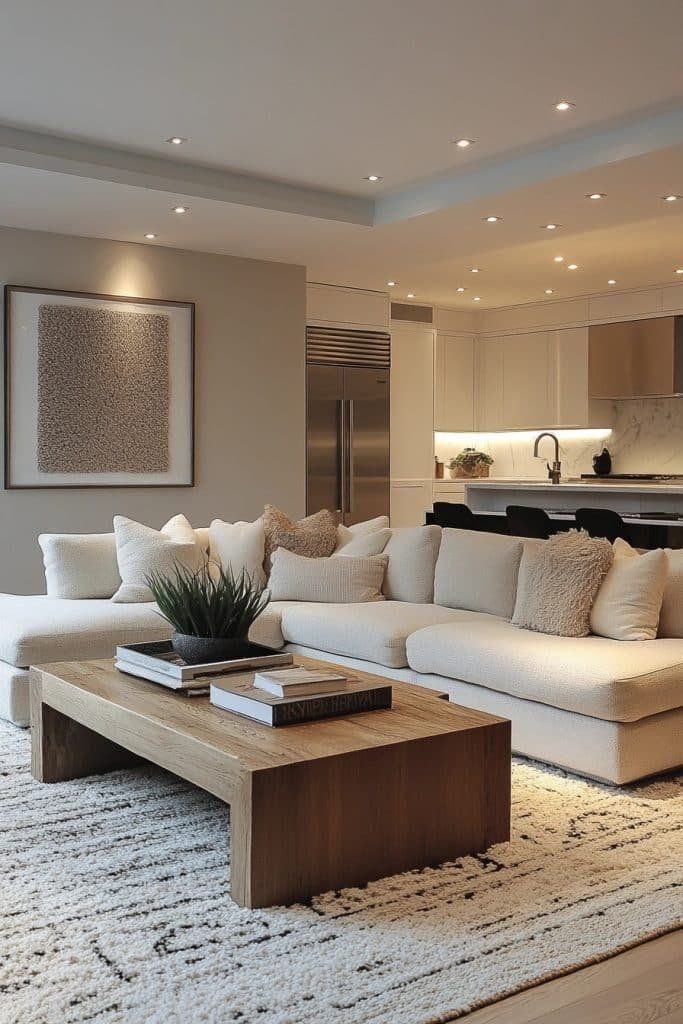
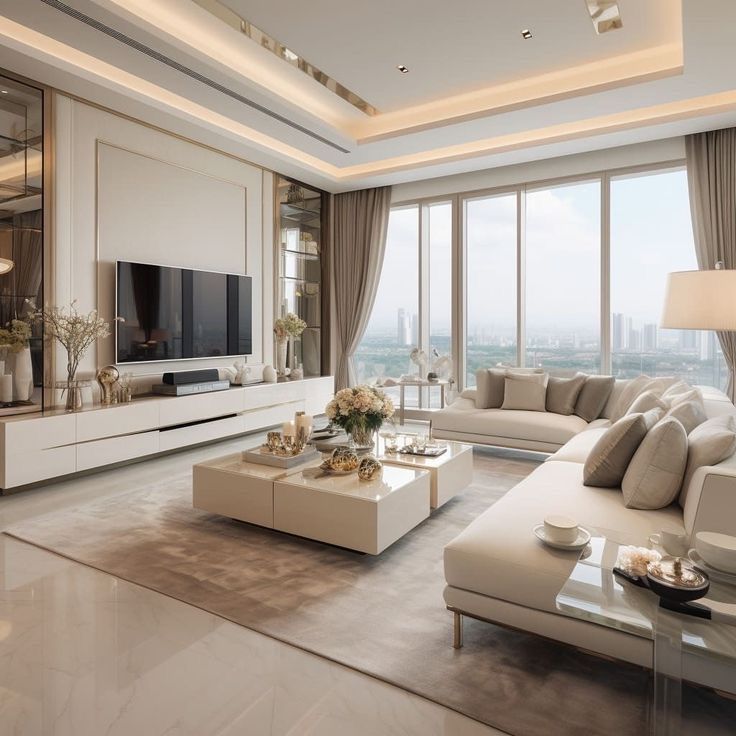
Walk through any truly welcoming home and you’ll notice something: the spaces where people naturally congregate aren’t just beautiful—they’re purposeful. These are the rooms that tell your story, where morning coffee turns into long conversations and quick dinners somehow stretch into hours of laughter around the table.
Your dining area carries more weight than you might think. It’s not just where you eat; it’s where homework gets finished at the last minute, where friends gather for game nights, and where families reconnect at the end of busy days. This multifunctional reality means your furniture choices need to work overtime. A well-chosen dining set becomes the anchor for countless memories, sturdy enough for daily use yet presentable enough for special occasions.
When selecting dining furniture, think beyond aesthetics. Consider the wood’s durability—will it withstand the accidental bumps from chair backs? Do the chairs offer enough support for lingering conversations? Is the table size realistic for your space, allowing comfortable movement around it while still fitting everyone you love? These practical questions matter more than matching a Pinterest board.
The dining table’s surface tells its own story over time. Some families prefer the polished perfection of easy-to-clean finishes, while others embrace the character that comes with a few scratches and marks. Neither approach is wrong. What matters is choosing pieces that align with how you actually live, not how you wish you lived or think you think you should live.
Lighting plays a crucial role here too. Harsh overhead lights can make even the loveliest space feel institutional, while the right fixture creates ambiance that makes every meal feel intentional. Aim for lighting that can adjust—bright enough for morning routines and homework sessions, dimmable for evening dinners when you want to slow down.
Building Your Living Room Around Real Life
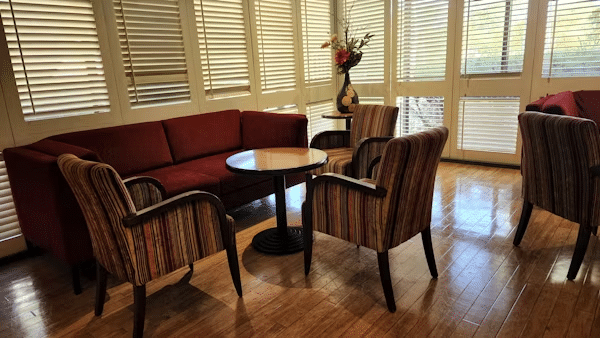
The living room carries an interesting burden in modern homes. It’s somehow supposed to be both the showpiece guests first see and the comfortable retreat where you collapse after exhausting days. Balancing these competing demands requires thinking carefully about what this space really needs to do.
Coffee tables often end up as afterthoughts—something to fill the gap between your sofa and TV. But these humble pieces actually work harder than almost anything else in the room. They hold your morning cup while you catch up on news, provide a surface for board games with kids, display books that reveal your interests, and offer a place to prop tired feet at day’s end.
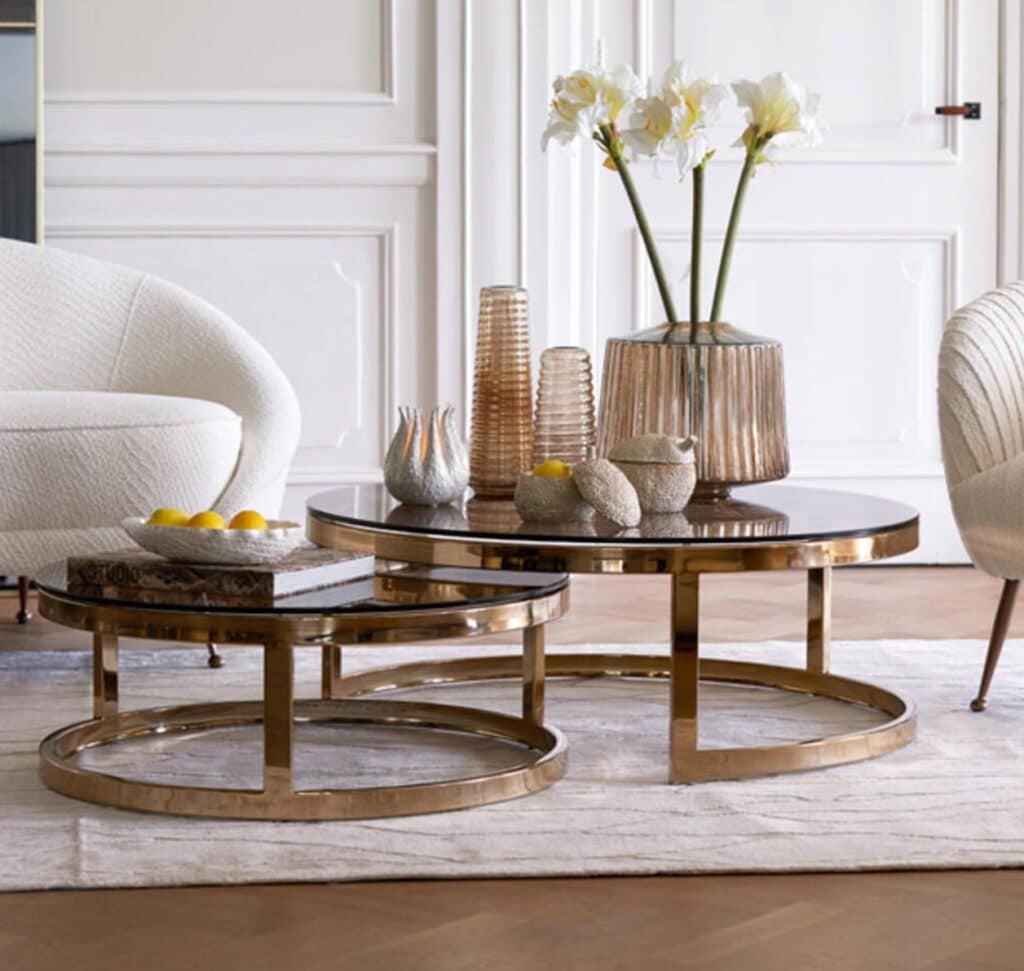

The key is finding designer coffee tables that bring both form and function without overwhelming your space. Scale matters tremendously here. A table that looks perfect in a showroom might dominate a smaller living room or get lost in a spacious one. Measure carefully, considering not just the table itself but the circulation space around it. You should be able to walk past comfortably and reach the table easily from your seating.
Material choice dramatically affects how you’ll use the piece. Glass tops showcase beautiful rugs underneath and keep spaces feeling open, but they demand constant cleaning and might not suit homes with young children. Wood brings warmth and character while hiding minor wear better. Stone or marble makes bold statements and stands up to heavy use. Consider your lifestyle honestly—there’s no award for choosing a surface that looks gorgeous but makes you anxious about every drink placed on it.
Storage becomes increasingly valuable as time goes on. Coffee tables with built-in shelves or drawers help wrangle the constant accumulation of remotes, magazines, coasters, and all the other small items that migrate to this central spot. This hidden utility keeps surfaces clearer and minds calmer.
Think about height relationships too. Your coffee table should sit slightly lower than your sofa seat cushions—typically around 2-4 inches lower. This makes reaching items comfortable whether you’re sitting normally or lounging back. The distance between your sofa and coffee table also matters. About 14-18 inches allows comfortable leg crossing and movement while keeping everything within easy reach.
Creating Flow Through Connected Spaces

Open-plan living has become the standard in modern homes, blurring traditional boundaries between cooking, eating, and relaxing spaces. This layout offers wonderful flexibility but creates its own challenges. How do you define different zones while maintaining visual harmony? How do you create intimacy within openness?
Bar stools and counter-height seating offer elegant solutions to these spatial puzzles. They act as gentle dividers, marking where the kitchen ends and living space begins without blocking sightlines or conversation. More importantly, they transform kitchens from isolated workspaces into social hubs where cooking and conversation happen simultaneously.
The right rattan bar stools bring textural interest that softer furniture can’t match. Natural materials introduce organic warmth into spaces that might otherwise feel too sleek or sterile. Rattan’s woven character catches light beautifully, creating subtle shadows and depth that change throughout the day. Unlike solid wood or metal, rattan has a casual ease that immediately makes spaces feel more approachable.

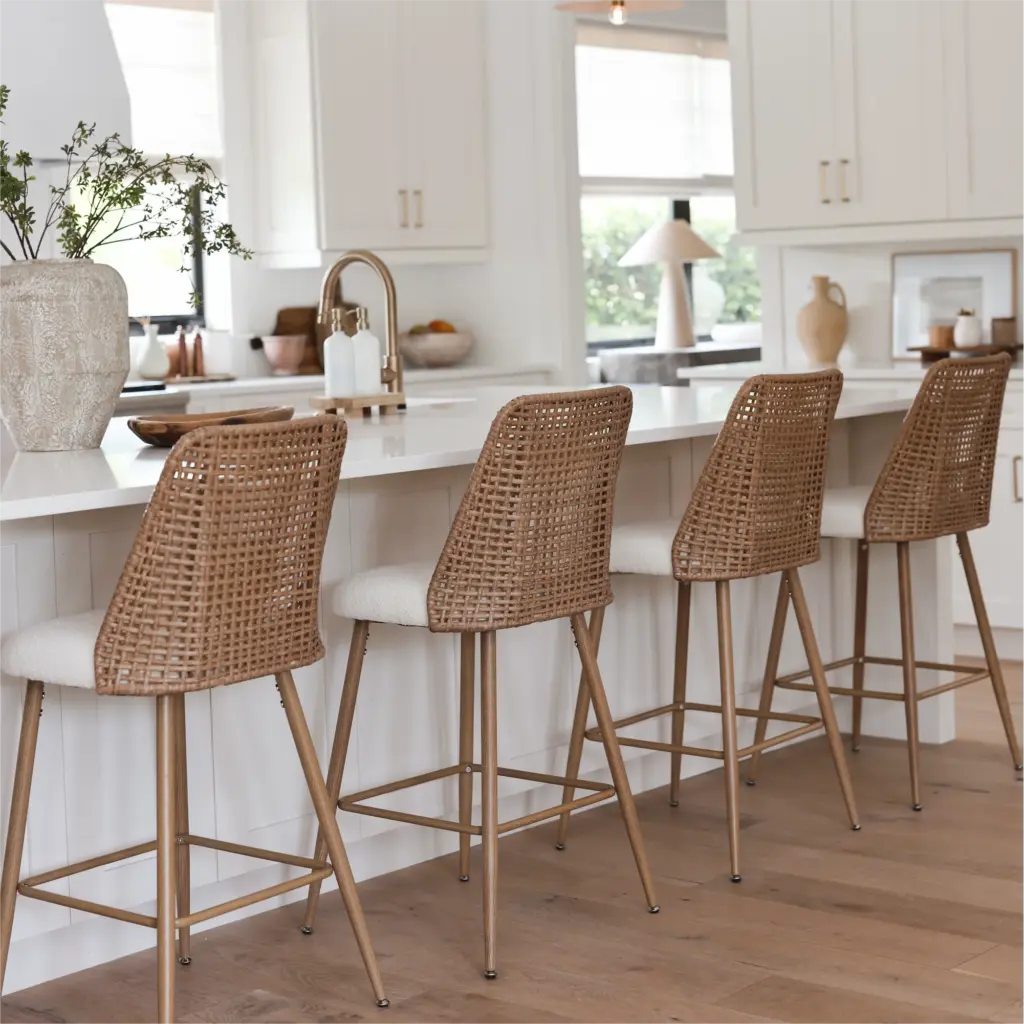
Comfort becomes crucial when choosing bar seating since these spots often see heavy use. Look for stools with footrests—dangling feet get uncomfortable quickly. Back support matters if you expect people to linger over coffee or homework. Swivel features add convenience in busy kitchens where people need to turn and chat without awkwardly repositioning.
Height is non-negotiable. Counter-height stools (24-26 inches) work for standard kitchen counters, while bar-height versions (28-30 inches) suit taller islands and bar areas. Measure your counter height and subtract 10-12 inches—that’s your ideal seat height. Too high or too low makes eating uncomfortable and looks visually off.
Consider how many stools your space can reasonably accommodate. A common mistake is cramming too many into limited counter space. Allow at least 24-30 inches of space per stool so people can sit comfortably without bumping elbows. In smaller kitchens, fewer well-placed stools work better than a crowded lineup.
Material mixing adds sophisticated interest when done thoughtfully. Rattan stools pair beautifully with marble or quartz countertops, creating warm-cool contrast. They complement wooden cabinets while offering textural variety. Against painted cabinetry, natural rattan provides organic relief from flat surfaces.
Protecting What Matters Most
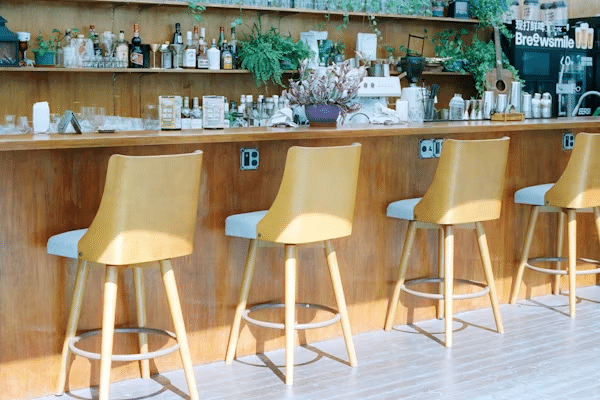
Creating a beautiful home involves more than just choosing the right furniture and décor—it’s also about ensuring your space remains secure and protected. This becomes especially important for those living on larger properties or rural settings where homes sit on expansive land. The peace of mind that comes from knowing your property is monitored allows you to truly relax and enjoy the spaces you’ve worked so hard to create.
The psychology of feeling secure in your home cannot be overstated. When you know your property is protected—whether you’re inside relaxing with family or away for extended periods—you inhabit your spaces differently. There’s less worry, more presence. You’re not constantly wondering what might be happening in unseen corners of your property. This sense of security becomes the invisible foundation that allows all your other design choices to shine.
Installation has become remarkably straightforward, with wireless options eliminating the need for extensive wiring projects. Strategic placement covers vulnerable areas without cluttering your carefully designed exteriors. The goal is protection that works silently in the background, never intruding on the aesthetic or atmosphere you’ve cultivated.
Designing for Life’s Sweetest Additions

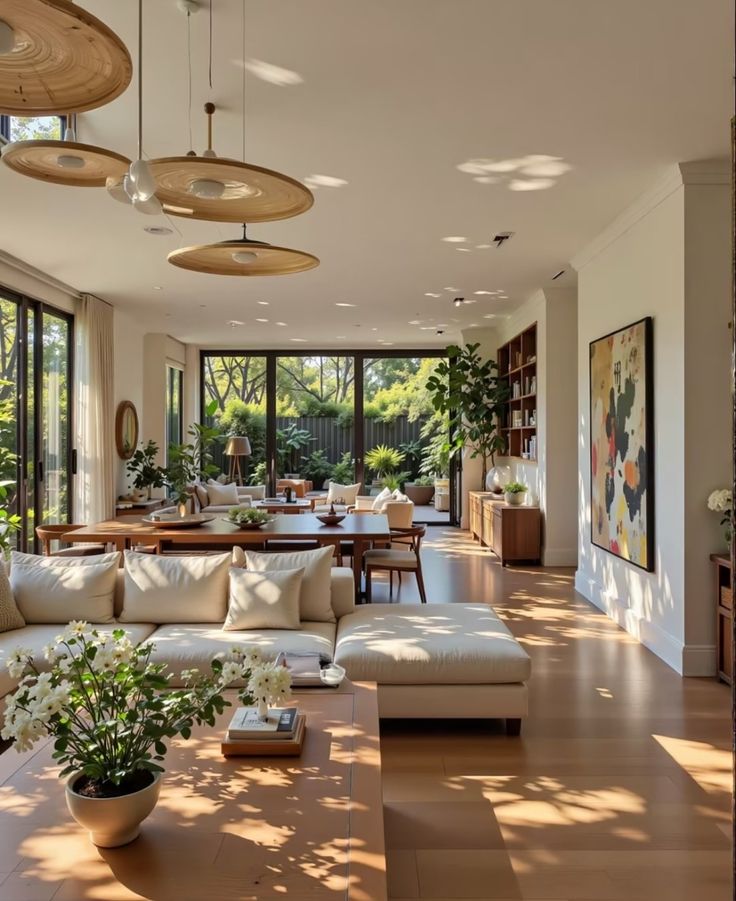
Perhaps no room in the home receives more careful attention than the nursery. Preparing a space for a new baby represents a unique design challenge—creating an environment that’s soothing yet stimulating, practical yet beautiful, safe yet full of personality. It’s where function and emotion intersect in the most tender way.
The modern approach to nursery design has evolved significantly. Gone are the days of overwhelming cartoon characters and garish primary colors. Today’s parents often prefer calmer palettes, natural materials, and designs with longevity that can transition as children grow. Shopping from a nursery online Australia retailer offers expectant parents the convenience of browsing extensive collections from home, comparing styles and prices, and carefully considering each piece without the pressure of in-store selling.
When creating a nursery, think about the room’s multiple functions. Yes, it’s where the baby sleeps, but it’s also where you’ll spend countless hours feeding, changing, reading, and simply being present during those precious early months. Comfortable seating for parents often gets overlooked in favor of baby-focused items, but a supportive chair or glider becomes essential furniture you’ll use for hours daily.
Storage needs in a nursery can surprise first-time parents. The sheer volume of tiny clothes, diapers, blankets, toys, and gear seems impossible for such small humans. Closed storage keeps clutter hidden and creates the calm environment babies need, while open shelving can display sweet decorative elements and keep frequently-used items within easy reach.
Safety considerations should guide every choice. Furniture anchored to walls, cordless window treatments, and non-toxic finishes aren’t optional—they’re essential. But safety doesn’t mean sacrificing style. Today’s nursery furniture beautifully balances both priorities, offering pieces that protect little ones while creating magazine-worthy spaces.
Lighting deserves special attention in nurseries. Harsh overhead lights can startle babies during nighttime changes and feedings. Layered lighting with dimmers allows you to adjust brightness for different activities—bright enough for playtime, dim enough for bedtime routines. A small nightlight provides just enough visibility for those middle-of-the-night moments without fully waking anyone.
The Power of Intentional Choices

Creating homes that truly work for how you live comes down to making intentional choices rather than following formulas. Every piece you bring in should earn its place—either through beauty, function, or ideally both. This doesn’t mean everything needs to be precious or expensive. It means being thoughtful about what you invite into your space.
Consider the lifecycle of each purchase. Fast furniture might seem appealing initially, but pieces built to last often cost less over time while creating less waste. Quality construction means fewer replacements, and classic designs age gracefully rather than looking dated as trends shift.
Your home should evolve with you rather than remaining static. The dining table that worked perfectly when you first moved in might need updating as your family grows. Living room furniture that suited couples might need rethinking when kids arrive. Bar stools that seemed perfect might get swapped as your entertaining style changes. The nursery transforms into a toddler room, then a bedroom for a growing child. This evolution is natural and healthy—resist the urge to achieve “finished” status too quickly.
Patience pays dividends in home design. Living with spaces before making major furniture investments helps you understand how you actually use rooms rather than how you imagine using them. That formal living room might become a music room. The dining room could transform into a craft studio. Let your real habits guide your choices rather than forcing yourself into spaces that don’t fit your life.
Bringing It All Together


Homes that feel truly welcoming share common threads: they’re honest about how their inhabitants live, they balance beauty with practicality, and they’re composed of pieces chosen with care rather than impulse. The dining table that anchors family life, the coffee table that sees daily use, the bar stools that turn cooking into socializing, the security that provides peace of mind, the nursery that welcomes new life—each element contributes to the larger story your home tells.
Remember that perfection isn’t the goal. Homes filled with personality and purpose will always feel better than showroom replicas that don’t reflect real life. The marks on your dining table, the books stacked on your coffee table, the extra stool pulled up for an unexpected guest, the nursery that evolves into a kid’s room—these details reveal a home that’s truly lived in and loved.
Start where you are. You don’t need to transform everything at once. Choose one space that bothers you most or one area you use constantly. Invest there first. Let each thoughtful choice build on the last, creating spaces that support your daily rhythms while lifting your spirits. The goal isn’t magazine-perfect rooms but spaces that make your particular version of home feel right.
Your home should be your favorite place to be. When you walk through the door at the end of long days, you should feel tension drain away. When friends gather, conversations should flow naturally. When quiet moments arrive, your surroundings should feel like comfort rather than clutter. When you know your property is secure and your loved ones are safe, you can fully inhabit each moment. That’s what thoughtful design delivers—not perfection, but belonging.
- 0shares
- Facebook0
- Pinterest0
- Twitter0


